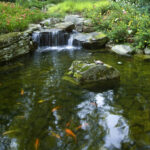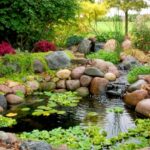When it comes to designing a pond, there are many factors to consider in order to create a beautiful and functional water feature. One of the first decisions to make is the size and shape of the pond. The size of the pond will depend on the space available in your yard and the desired purpose of the pond. A larger pond can support a greater variety of plants and wildlife, while a smaller pond may be better suited for a more compact space.
In addition to size, the shape of the pond can also impact its overall aesthetics. Common shapes for ponds include circular, oval, and kidney-shaped designs. The shape of the pond should complement the surrounding landscape and fit in with the overall design of the garden. Curved edges can create a more natural and organic look, while straight edges can give a more modern and structured feel.
Another important consideration in pond design is the depth of the water. A deeper pond can support larger fish and aquatic plants, while a shallow pond may be better suited for smaller plants and wildlife. The depth of the pond should also take into account the climate of the area, as deeper ponds can be more difficult to maintain in colder climates.
When it comes to landscaping around the pond, choosing the right plants and materials can make a big difference in the overall look of the water feature. Consider planting a mix of aquatic plants, like water lilies and lotus, around the edges of the pond to create a natural habitat for fish and other wildlife. Rocks, gravel, and driftwood can also be incorporated to add texture and interest to the design.
In terms of maintenance, it’s important to consider how the pond will be filtered and cleaned. A filtration system, like a pump and skimmer, can help to keep the water clean and clear of debris. Regular maintenance, such as removing leaves and algae, will also be necessary to keep the pond looking its best. Additionally, consider adding aeration to the pond to help oxygenate the water and support a healthy ecosystem.
Overall, pond design is a creative process that requires careful planning and consideration of various factors. By thinking about the size, shape, depth, landscaping, and maintenance of the pond, you can create a water feature that enhances the beauty and functionality of your outdoor space. With the right design, a pond can become a focal point in your garden, providing a peaceful and serene setting for relaxation and enjoyment.
















